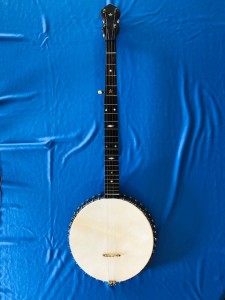 When this antique and unmarked banjo first appeared in the BRC workshop, it was a forlorn grime covered instrument with a detached fretboard, fractured or missing mother of pearl inlays, and a yellow brown calfskin head that had dried into parched shoe leather.
When this antique and unmarked banjo first appeared in the BRC workshop, it was a forlorn grime covered instrument with a detached fretboard, fractured or missing mother of pearl inlays, and a yellow brown calfskin head that had dried into parched shoe leather.
For months, it collected dust in an ignored corner of the shop before it finally won the attention that it deserved. A meticulous clean-up surprisingly disclosed an Elite “No Knot” tailpiece that was known to be applied to high grade 5-stringers at the turn of the century.
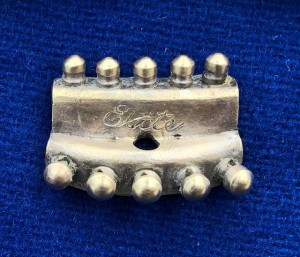
On the under surface of the tailpiece was a patent date of May 2, 1899. There were several patents of this unique No-Knot tailpiece from 1892 to 1914 to accommodate various models of banjo. The ancient bridge appears to have been carved from whalebone. Scrimshaw and whale bone carving were a sailor`s past time at sea until the whaling industry ended in the US in 1927.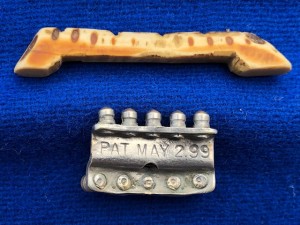
Upon closer inspection, the fretboard revealed deep fingertip grooves in the first 3 frets spaces indicating that this instrument had been industriously played by its owner who obviously cherished its music. Missing frets were replaced, and the mother of pearl inlays were patched -up. For a facelift, a snowy white new calfskin head was installed.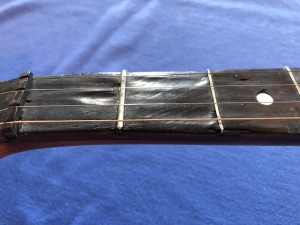
Lastly, the nut at the base of the peg head was noted to be angled slightly, and this is interpreted to be a calculated design feature to compensate for string length intonation usually accommodated in modern bridges. Of note, Stelling banjos have string compensations slotted into the nut.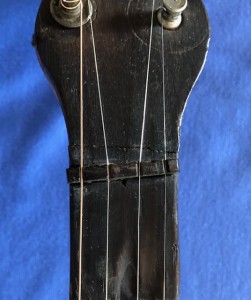
This handsome banjo now hangs at the top of the stairwell leading to our workshop to remind the BRC founder that even the most humblest of old banjos has a story.
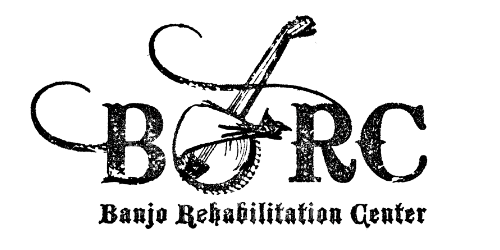
No Comments